
The Solar-Terrestrial Centre of Excellence (STCE) is a collaborative network of the Belgian Institute for Space Aeronomy, the Royal Observatory of Belgium and the Royal Meteorological Institute of Belgium.
 |
Published by the STCE - this issue : 29 Nov 2013. The Solar-Terrestrial Centre of Excellence (STCE) is a collaborative network of the Belgian Institute for Space Aeronomy, the Royal Observatory of Belgium and the Royal Meteorological Institute of Belgium. |
| Archive of the newsletters | Subscribe to this newsletter by mail |

The conference got the label 'successful', if we might believe the participants twitters and comments. A few:
A new conference for my top: ESWW10 was a nice one! With fruitful discussions till the last second and lots of projects ahead!
Outstanding turnout for our Solar Flare Prediction session at European Space Weather Week ESWW10. Lots of questions and great discussion!
Very interesting to see many, many women, and lots of young scientists at ESWW10
2nd day in full swing at ESWW10 and i already have a brain full of ideas/information to follow up next week! Still 3 1/2 days to go!
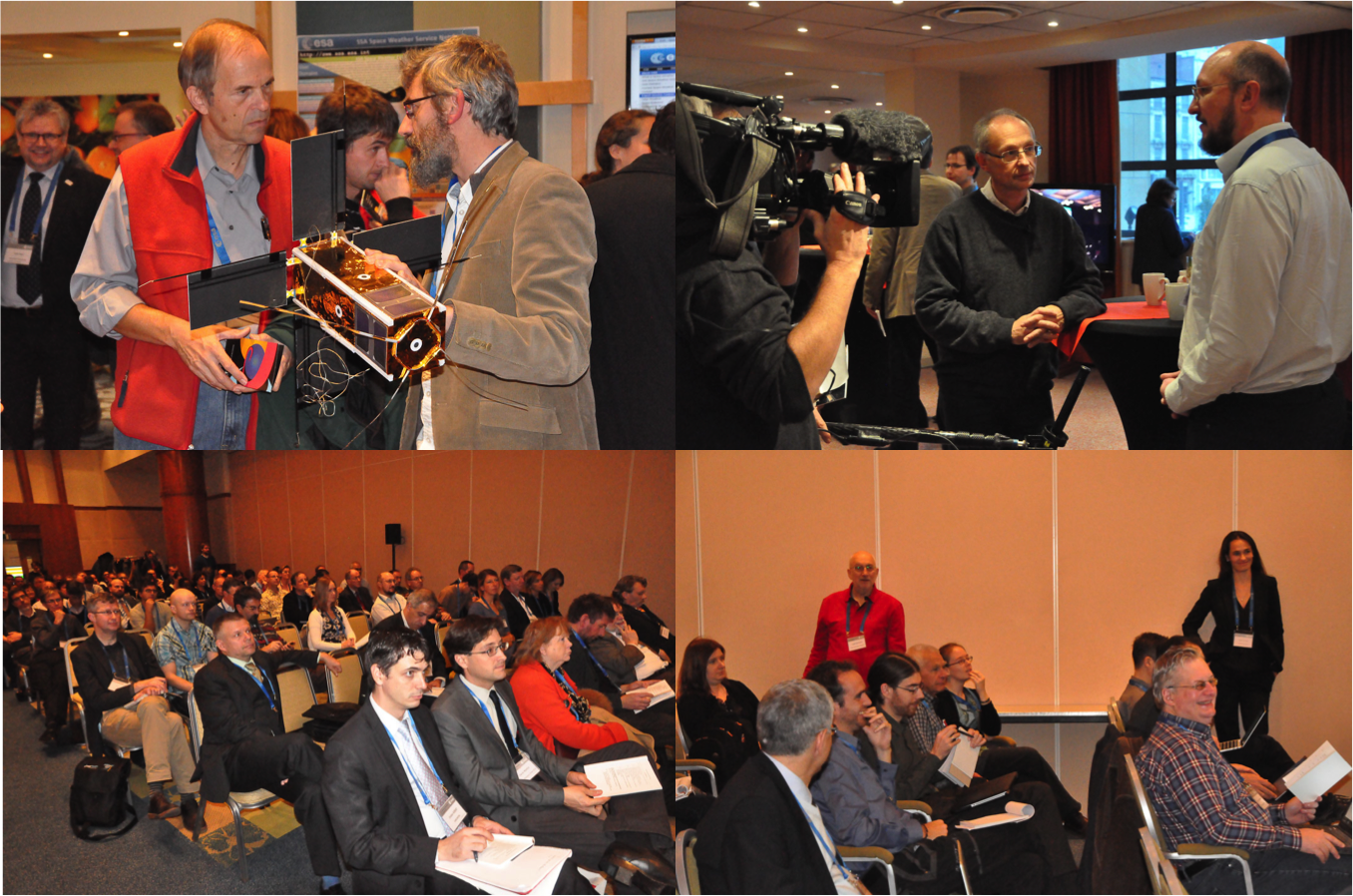
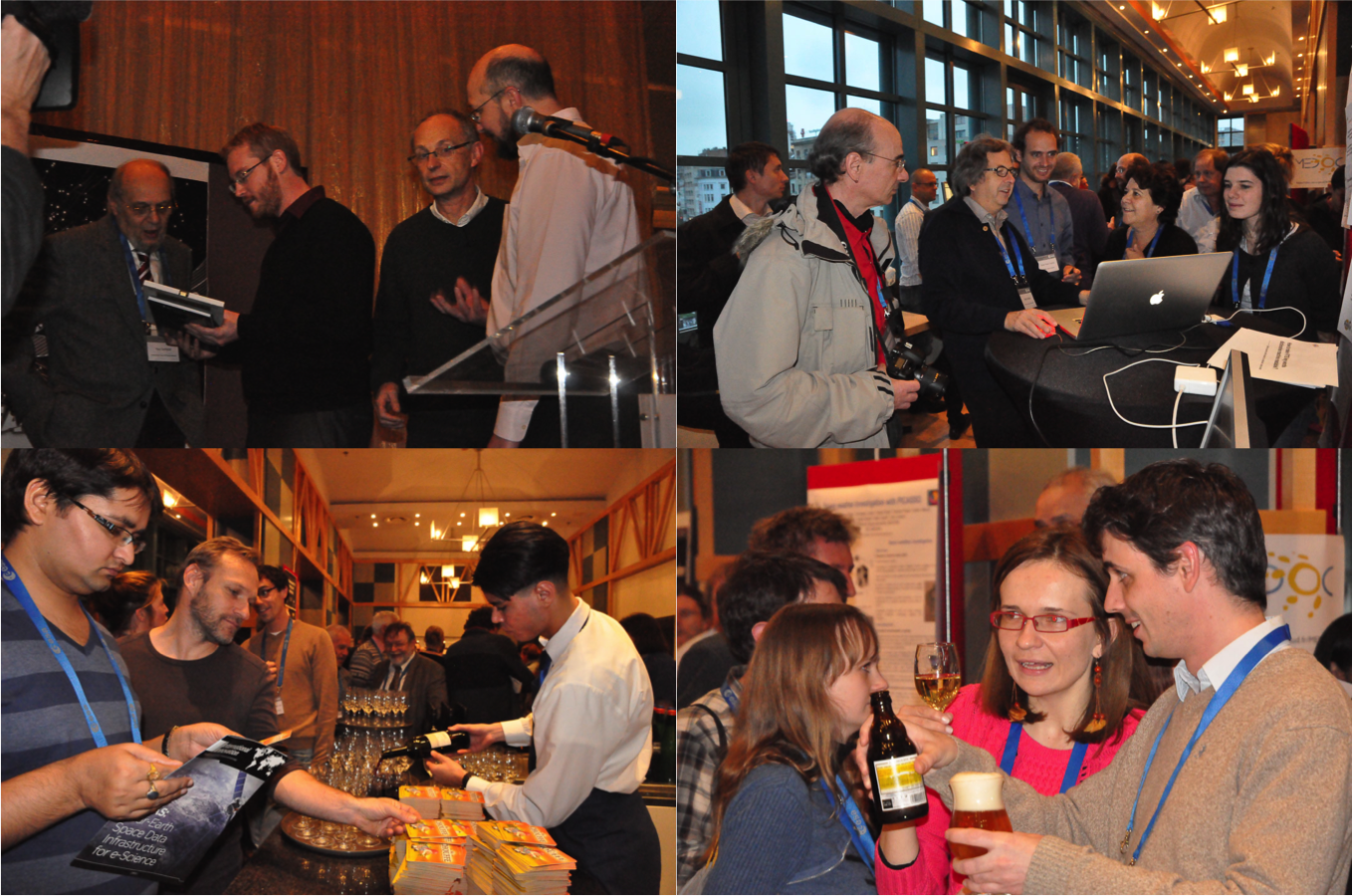
more tweets and pictures at http://www.stce.be/esww10
Solar flare activity fluctuated between low and high during the week.
In order to view the activity of this week in more detail, we suggest to go to the following website from which all the daily (normal and difference) movies can be accessed: http://proba2.oma.be/ssa
This page also lists the recorded flaring events.
A weekly overview movie can be found here (SWAP week 191).
http://proba2.oma.be/swap/data/mpg/movies/WeeklyReportMovies/WR191_Nov18_Nov24/weekly_movie_2013_11_18.mp4
Details about some of this week's events, can be found further below.
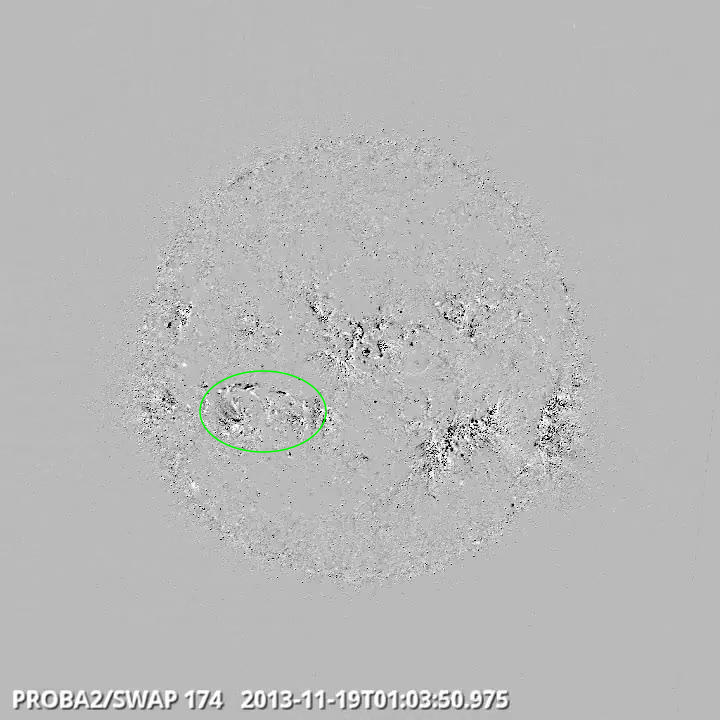
Flow on South East Quad @ 01:03 - SWAP difference image
Find a movie of the event here (SWAP difference movie)
http://proba2.oma.be/swap/data/mpg/movies/WeeklyReportMovies/WR191_Nov18_Nov24/Events/20131119_SplitFlow_SouthEastQuad_0103_swap_diff.mp4
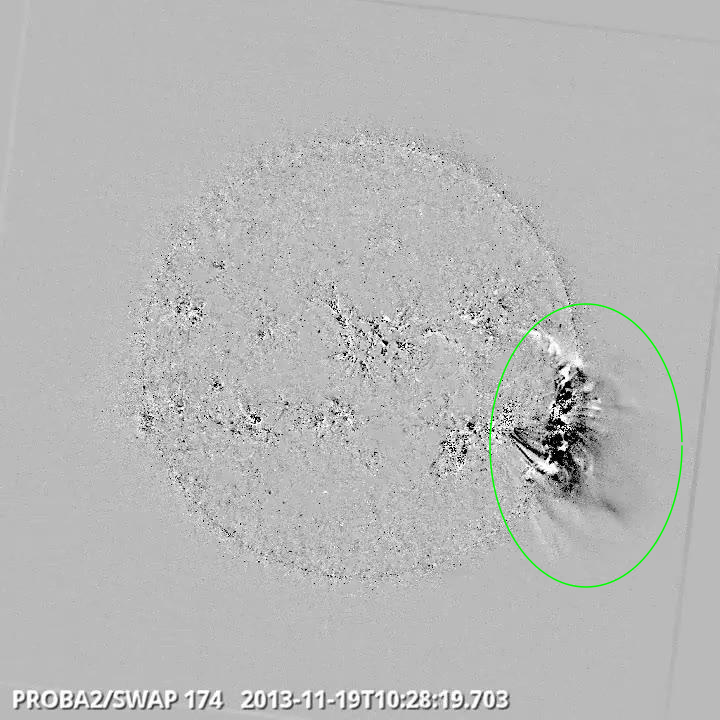
Eruption on South West Limb @ 10:28 - SWAP difference image
Find a movie of the event here (SWAP difference movie)
http://proba2.oma.be/swap/data/mpg/movies/WeeklyReportMovies/WR191_Nov18_Nov24/Events/20131119_Eruption_WestLimb_1028_swap_diff.mp4
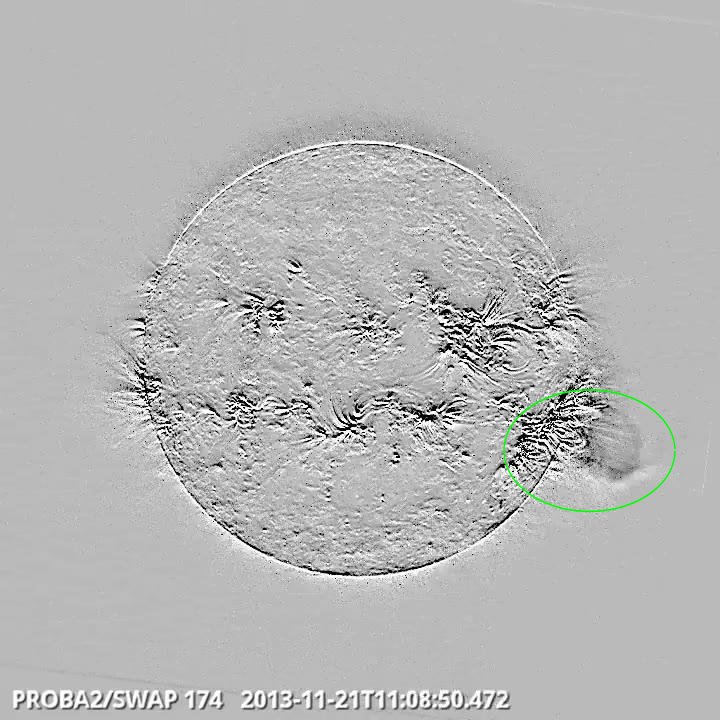
Eruption on West Limb @ 11:08 - SWAP difference image
Find a movie of the event here (SWAP difference movie)
http://proba2.oma.be/swap/data/mpg/movies/WeeklyReportMovies/WR191_Nov18_Nov24/Events/20131121_Eruption_WestLimb_1108_swap_diff.mp4
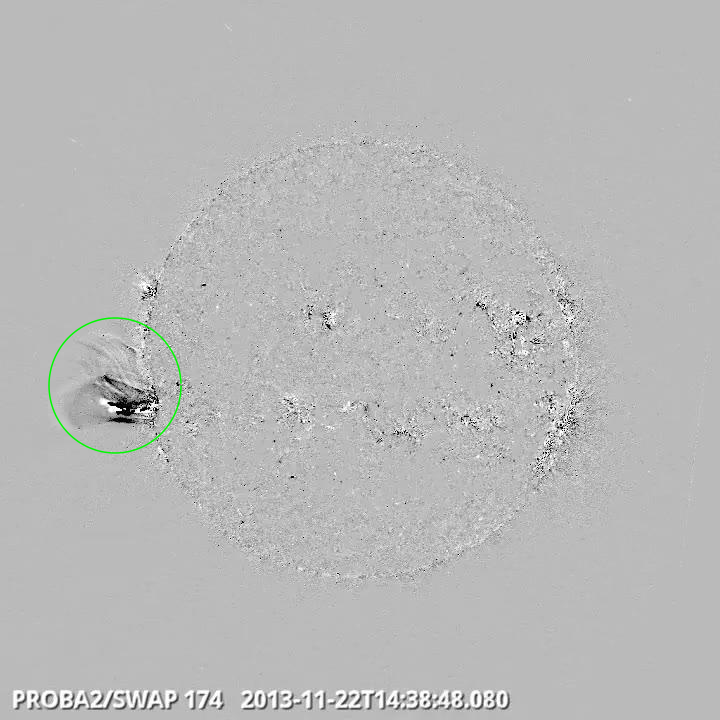
Eruption on West Limb @ 14:38 - SWAP difference image
Find a movie of the event here (SWAP difference movie)
http://proba2.oma.be/swap/data/mpg/movies/WeeklyReportMovies/WR191_Nov18_Nov24/Events/20131122_Eruption_EastLimb_1438_swap_diff.mp4
NOAA ARs 1893 and 1904 have been the dominant players in terms of flaring activity. AR 1893 produced an X1.0 flare on Nov. 19, peaking at 1026 UT, while close to the west limb. It was accompanied by a type II burst, a coronal EUV wave and a CME. The proton flux rose slightly in the aftermath of the flare, peaking on Nov. 19 around 1800UT, but never reached the official proton event threshold.
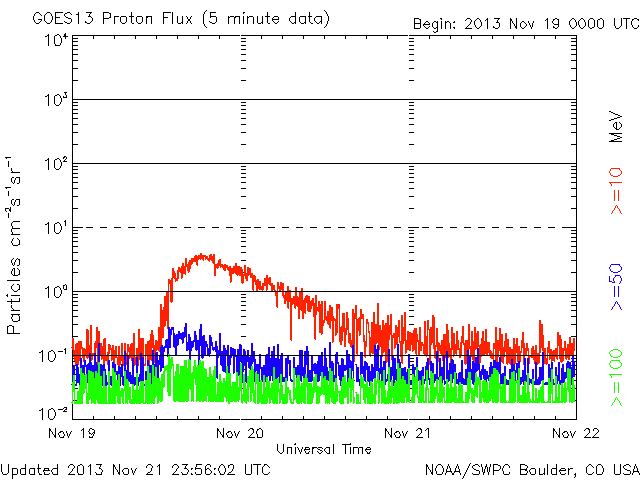
The same region produced, while on the west limb, a M1.2 flare on Nov. 21, peaking at 1111 UT. It was also associated with a CME.
NOAA AR 1904 appeared north of, and close to AR 1899 on Nov. 20, nearly vanished on Nov. 21, but grew up again on Nov. 22. It produced 2 M flares on Nov. 23, a M1.1 peaking at 0232 UT and a M1.0 peaking at 1257 UT. No CMEs were detected.
Geomagnetic activity has been very low for the whole week, with only a brief period of unsettled conditions at planetary and local (Dourbes) levels on Nov. 23 (from 3 to 6 UT) linked to a few jumps from one sector to another sector combined with a negative z-component of the interplanetary magnetic field (IMF). The parameter phi gives the polarity of the IMF: in the case of an extreme fast solar wind (no curved, thus straight magnetic field lines) phi equals 0 or 360/180 degrees, the IMF points inwards/outwards. In the graph below phi has values around 45 degrees during a few hours on Nov 22 and Nov 23, while for the remaining hours phi is mainly situated between 270 and 360 degrees. The sector boundary crossing on Nov 22 could not influence the earth magnetic field.
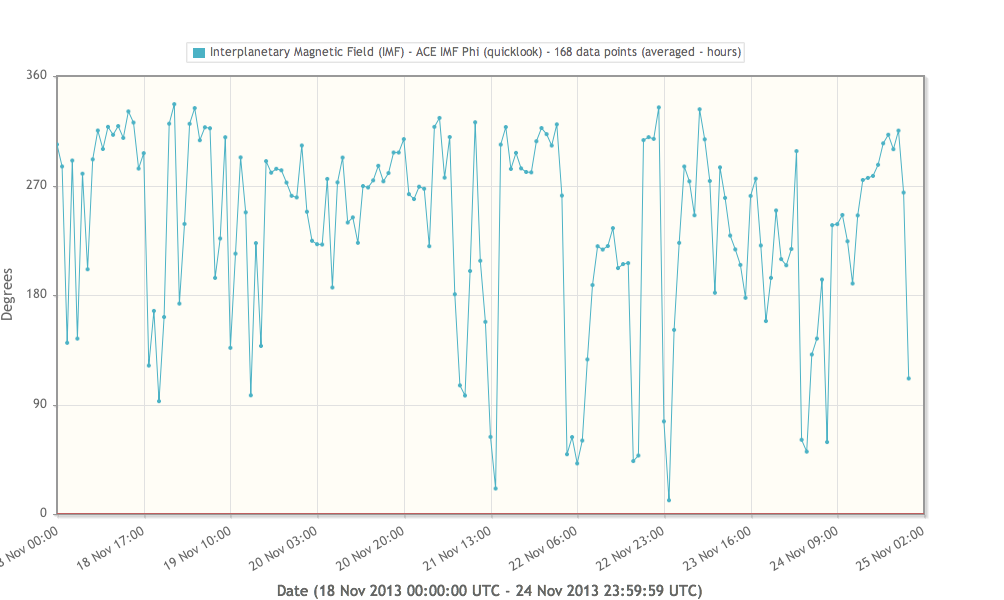
| DAY | BEGIN | MAX | END | LOC | XRAY | OP | 10CM | TYPE | Cat | NOAA |
| 19 | 1014 | 1026 | 1034 | S70W14 | X1.0 | SF | 530 | II/1 | 38 | 1893 |
| 21 | 1052 | 1111 | 1142 | M1.2 | 38 | 1893 | ||||
| 23 | 0220 | 0232 | 0249 | N14W56 | M1.1 | 1N | 1904 | |||
| 23 | 1249 | 1257 | 1305 | M1.0 | I/1 | 1904 |
| LOC: approximate heliographic location | TYPE: radio burst type |
| XRAY: X-ray flare class | Cat: Catania sunspot group number |
| OP: optical flare class | NOAA: NOAA active region number |
| 10CM: peak 10 cm radio flux |
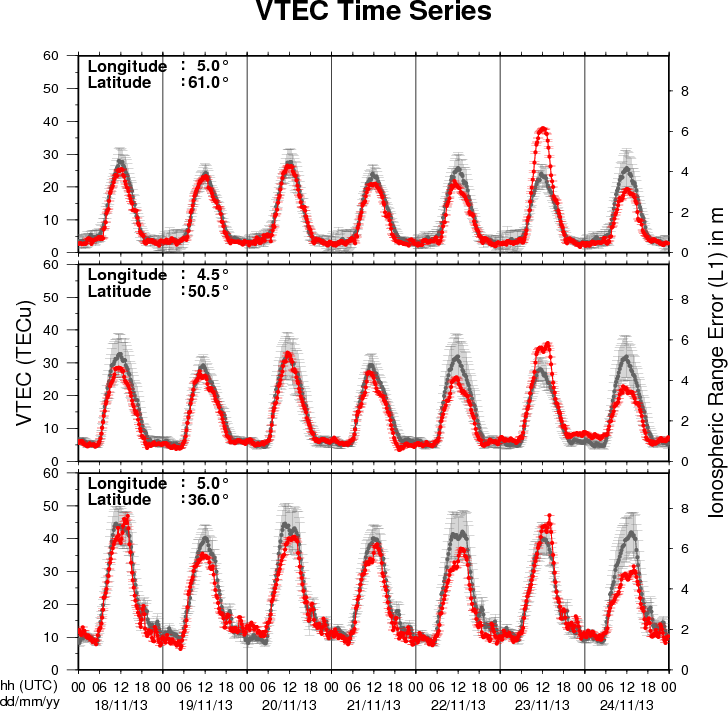
The figure shows the time evolution of the Vertical Total Electron Content (VTEC) (in red) during the last week at three locations:
a) in the northern part of Europe(N61°, 5°E)
b) above Brussels(N50.5°, 4.5°E)
c) in the southern part of Europe(N36°, 5°E)
This figure also shows (in grey) the normal ionospheric behaviour expected based on the median VTEC from the 15 previous days.
The VTEC is expressed in TECu (with TECu=10^16 electrons per square meter) and is directly related to the signal propagation delay due to the ionosphere (in figure: delay on GPS L1 frequency).
The Sun's radiation ionizes the Earth's upper atmosphere, the ionosphere, located from about 60km to 1000km above the Earth's surface.The ionization process in the ionosphere produces ions and free electrons. These electrons perturb the propagation of the GNSS (Global Navigation Satellite System) signals by inducing a so-called ionospheric delay.
See http://stce.be/newsletter/GNSS_final.pdf for some more explanations ; for detailed information, see http://gnss.be/ionosphere_tutorial.php
Slides presented during the ESWW10 Splinter "Next Generation SPENVIS" on Tuesday November 19th, 2013, by Kruglanski Michel
The Space Environment Information System (SPENVIS, http://www.spenvis.oma.be/) is a ESA web-based interface for assessing the space environment and its effects on spacecraft systems and crews under continual development since 1996 and used by a worldwide community. This ESWW10 splinter meeting offered the opportunity to SPENVIS users and model developers to meet the SPENVIS development team and share their feedback and questions. Latest updates on the development of the new system (Next Generation SPENVIS) were reported.
http://www.spaceweather.eu/en/repository/show?id=484
Start : 2014-04-27 - End : 2014-05-02
The EGU General Assembly 2014 will bring together geoscientists
from all over the world to one meeting covering all disciplines of
the Earth, planetary and space sciences. The EGU aims to provide a
forum where scientists, especially early career researchers, can
present their work and discuss their ideas with experts in all
fields of geosciences.